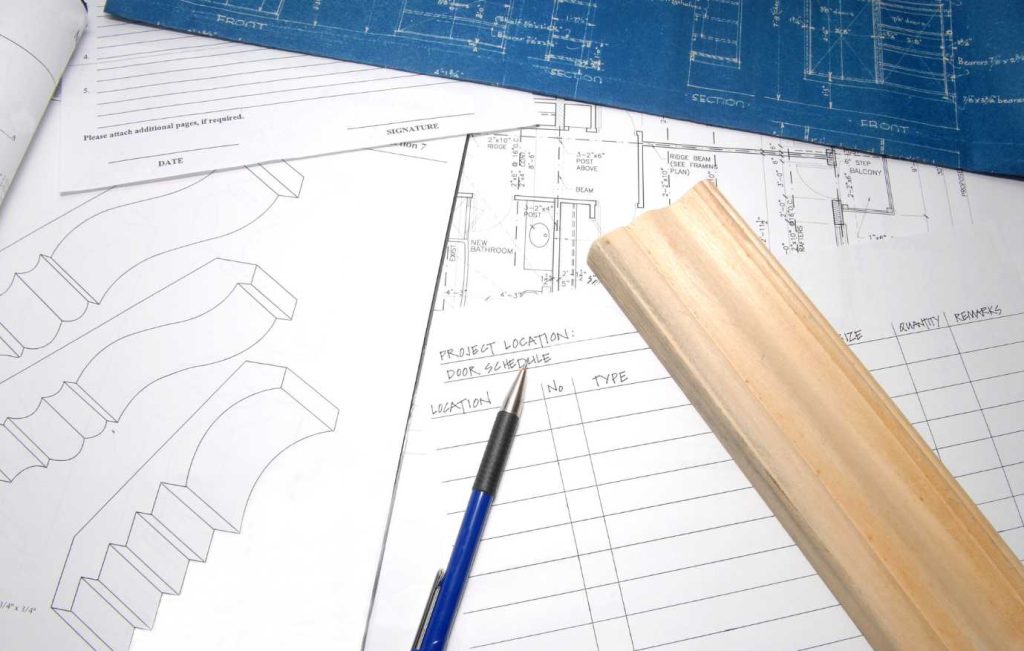From Blueprint to Build: Understanding the Importance of Millwork Shop Drawings
Millwork is a crucial component of interior design and construction, blending functionality and aesthetics. One of the most essential steps in ensuring high-quality millwork is the creation of detailed shop drawings. These drawings serve as a bridge between the conceptual design and the actual construction, ensuring accuracy, consistency, and efficiency. In this article, we’ll explore why detailed millwork shop drawings are so important and how they contribute to the successful realization of a project.
Introduction
Imagine you’re about to start a major renovation project. You have a clear vision of the elegant cabinetry, the intricate woodwork, and the seamless integration of these elements into your space. However, transforming this vision into reality requires more than just a good idea and skilled craftsmen—it necessitates detailed planning and precise execution. This is where millwork shop drawings come into play.

What Are Millwork Shop Drawings?
Millwork shop drawings are detailed plans that outline the specifications for custom woodwork, including cabinetry, moldings, trims, and other architectural details. These drawings provide a comprehensive guide for the construction team, illustrating the dimensions, materials, finishes, and assembly instructions for each piece.
Key Components of Millwork Shop Drawings
- Dimensions and Measurements: Accurate measurements are crucial. The drawings specify the exact dimensions of each component, ensuring that they fit perfectly within the designated space.
- Material Specifications: These include the type of wood, veneer, finishes, and any other materials required for the project.
- Construction Details: Detailed views and sections showing how components are to be assembled and joined.
- Hardware and Accessories: Information about the hardware, such as hinges, handles, and drawer slides, that will be used.

The Role of Detailed Shop Drawings in the Construction Process
Ensuring Precision and Accuracy
One of the primary benefits of detailed shop drawings is that they ensure precision and accuracy in the construction process. By providing exact specifications, these drawings minimize the risk of errors and discrepancies that can lead to costly rework and delays.
Enhancing Communication and Coordination
Shop drawings serve as a common reference point for all parties involved in the project, including architects, designers, contractors, and fabricators. This enhances communication and coordination, ensuring that everyone is on the same page and working towards the same goal.
Streamlining the Approval Process
Detailed shop drawings facilitate the approval process by providing a clear and comprehensive representation of the proposed millwork. This allows clients and project stakeholders to review and approve the designs before fabrication begins, ensuring that their expectations are met.
Supporting Quality Control
Quality control is a critical aspect of any construction project. Shop drawings help maintain high standards by providing detailed instructions and specifications that guide the fabrication and installation of millwork components. This reduces the likelihood of defects and ensures a high-quality finish.

The Workflow of Creating Millwork Shop Drawings
Creating effective millwork shop drawings involves several steps:
- Initial Design: The process begins with the initial design phase, where the overall concept and requirements are defined.
- Field Measurements: Accurate field measurements are taken to ensure that the drawings reflect the actual conditions of the space.
- Drafting: Detailed drawings are drafted, incorporating all the necessary specifications and dimensions.
- Review and Approval: The drawings are reviewed by all stakeholders, and any necessary revisions are made.
- Fabrication: Once approved, the shop drawings are used to guide the fabrication of the millwork components.
- Installation: The final step involves the installation of the millwork, guided by the detailed instructions in the shop drawings.

Conclusion
In the world of millwork, detailed shop drawings are indispensable. They transform conceptual designs into practical, buildable components, ensuring that the final product is both beautiful and functional. By enhancing precision, communication, and quality control, these drawings play a pivotal role in the successful completion of construction projects.
Whether you’re an architect, designer, or contractor, investing in detailed millwork shop drawings is a step you can’t afford to skip. For professional assistance in creating these crucial documents, consider partnering with experts like ADDMORE Services. Their team of skilled drafters and designers ensures that every detail is meticulously planned and executed, helping you bring your vision to life with precision and excellence.
For more information on millwork shop drawings and their importance in construction, visit us.
By understanding and utilizing the power of detailed shop drawings, you can ensure that your millwork projects are executed flawlessly, from concept to completion.








